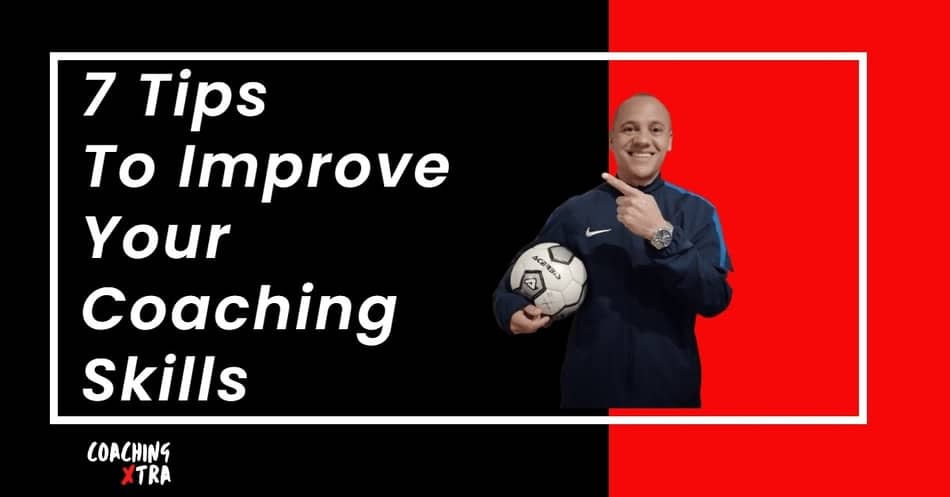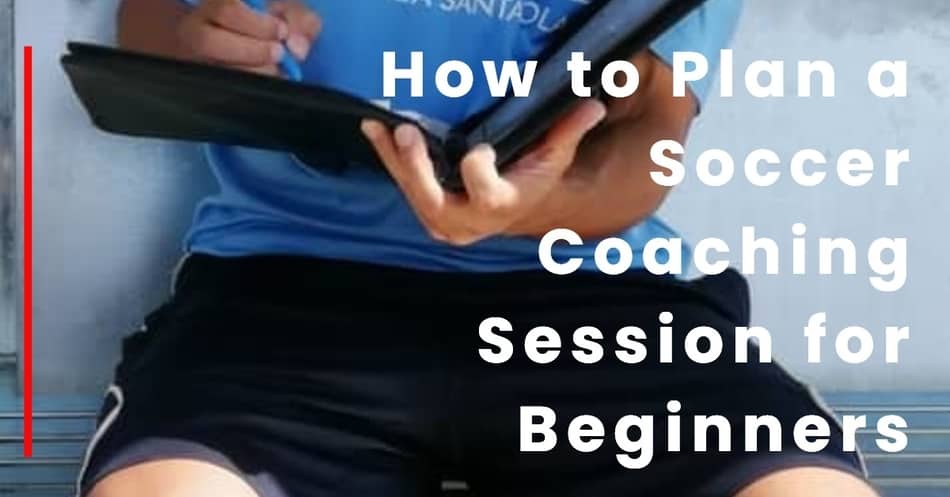Are you a football (soccer) coach that wants to ensure your players are training properly?
If so, then using proprioception exercises should be a part of your training sessions. I have studied and placed my knowledge of proprioception training into many training sessions and this is why it should be included in your team’s training schedule.
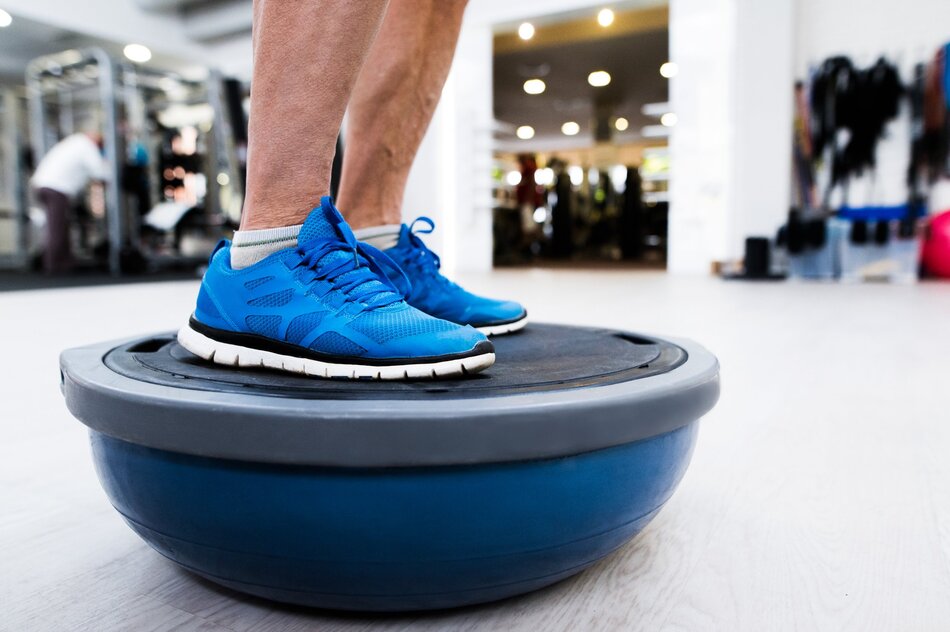
Proprioception training is a type of practice that helps improve your body’s awareness and understanding of its position in space. This is extremely important for football players, as it can help them improve their agility, coordination, and balance. This type of training is generally a component of an injury prevention program, aimed at reducing the risk of injuries among athletes.
After implementing proprioception training into sessions over many years, I have come across a range of proprioception exercises that help to develop an athlete’s sense of awareness of their body and surroundings.
So with that in mind, let me share with you 5 proprioception training drills.
5 great proprioception exercises for football players
1. Touch cones balancing
Stand on the right leg with the left knee flexed. When the player is ready, they must try to touch all of the four cones with the left foot, which must also remain off the ground.
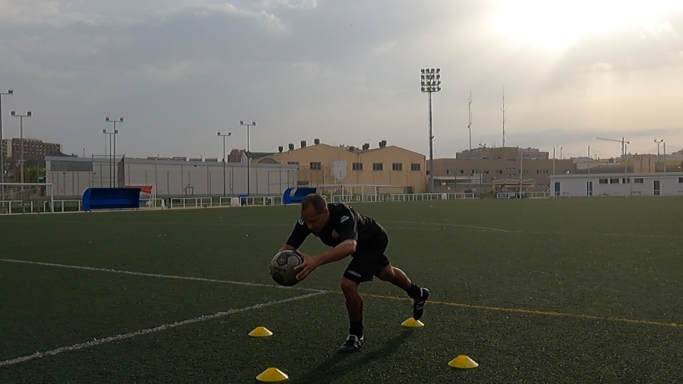
Repeat the exercise with the opposite leg.
2. Diagonal jumps
Start by standing on both feet with several hoops lined up ahead, each one diagonal to the other.
Before jumping into the first hoop, take a few running steps on the spot and then leap high (pushing off the left leg) into the first hoop (landing on the right leg).
The player must land on one foot, making sure to bend the knee as the foot touches the floor and then take a short pause to gain balance.

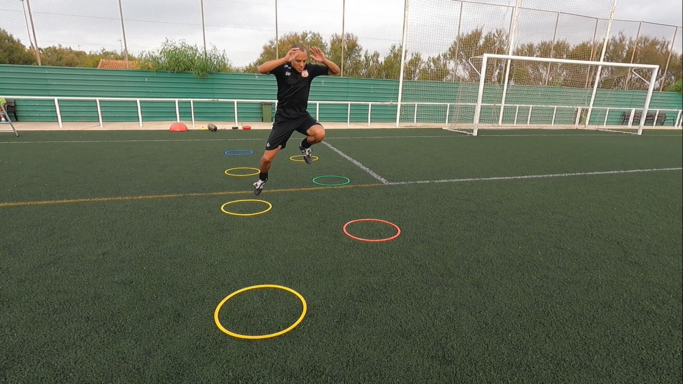
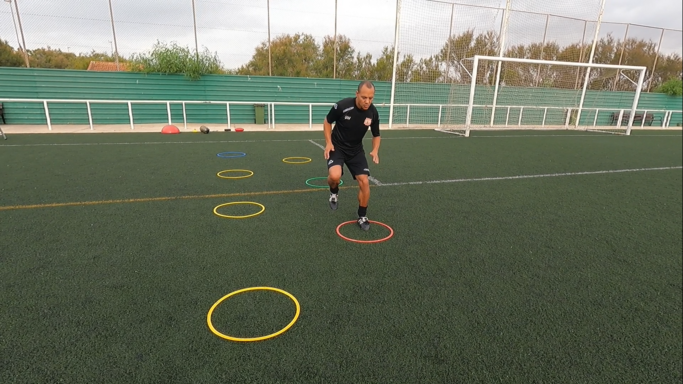
Repeat the sequence using the opposite legs to the next hoop.
3. Ball wrestling
Two players need to stand opposite each other, balancing one-legged, on a Bosu ball, or something similar. Both players hold the same ball with two hands, pushing and pulling the ball away from them to make the two players work hard to keep their balance.
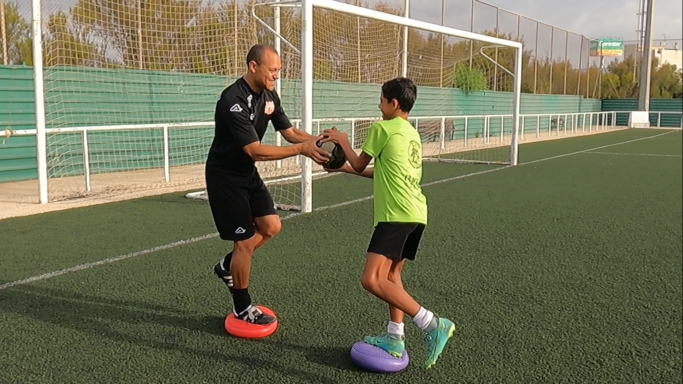
4. One-leg volleys
One player stands on a Bosu ball, balancing on the right foot, whilst a partner stands opposite holding a football.
The player holding the ball serves the ball to their partner who performs several volleys, with the non-standing foot and without the left foot touching the ground. Repeat with the opposite foot.
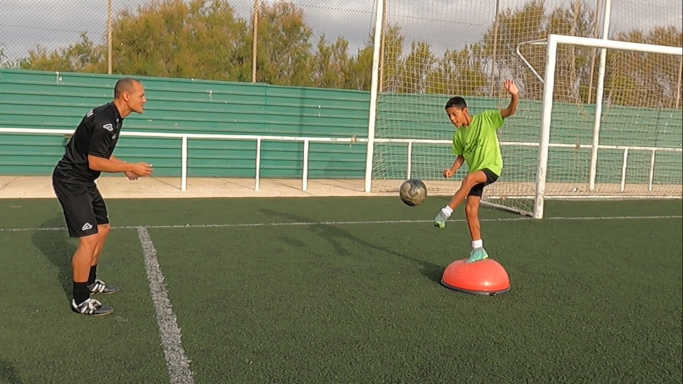
5. Bosu Lunges
Start by placing the Bosu ball on the ground. Place your right foot in the middle of the ball and lunge forward, keeping your left foot on the ground.
Make sure to keep your trunk upright and push off with your right foot to return to the starting position.

Repeat with the opposite leg.
Tips on how to progress these exercises as you get stronger
As you get stronger, you can progress these exercises by
- Increasing the duration of each exercise
- Adding additional repetitions
- Adding weight
- Eyes closed
- Introduce external forces
When should proprioception exercises be used?
Proprioception exercises should be used:
- At the beginning of a training session
- For 15-20 minutes of a session
- 2-3 times a week (adapt to your team’s schedule)
It is advisable to organise the exercises using the following recommendations:
- 3-4 exercises
- 2-3 repetitions
- 10-30 seconds per repetition
- Use a variety of exercises and include progressions
A few words of caution when performing proprioceptive exercises
Proprioceptive exercises are a great addition to any training program, but there are a few things you should keep in mind when performing them.
First, proprioceptive exercises put a lot of stress on your joints and connective tissues. This means that they should be performed gradually and with proper technique.
Second, if you have any pre-existing injuries, it is important to consult with a healthcare professional before starting any proprioceptive exercises.
And lastly, make sure to warm up thoroughly before performing any of these exercises. A proper warm-up will help prepare your body for the demands of the exercise and reduce your risk of injury.
The exercises provided in this article are a great way to get started with proprioception training.
So try incorporating some of these exercises into your next training session!
If you would like some more proprioception exercise ideas, then check out this YouTube video.
Thanks for reading! I hope you found this article helpful.
If you are interested in more articles then please go to the website’s blog post page or check out the recommended articles below.

